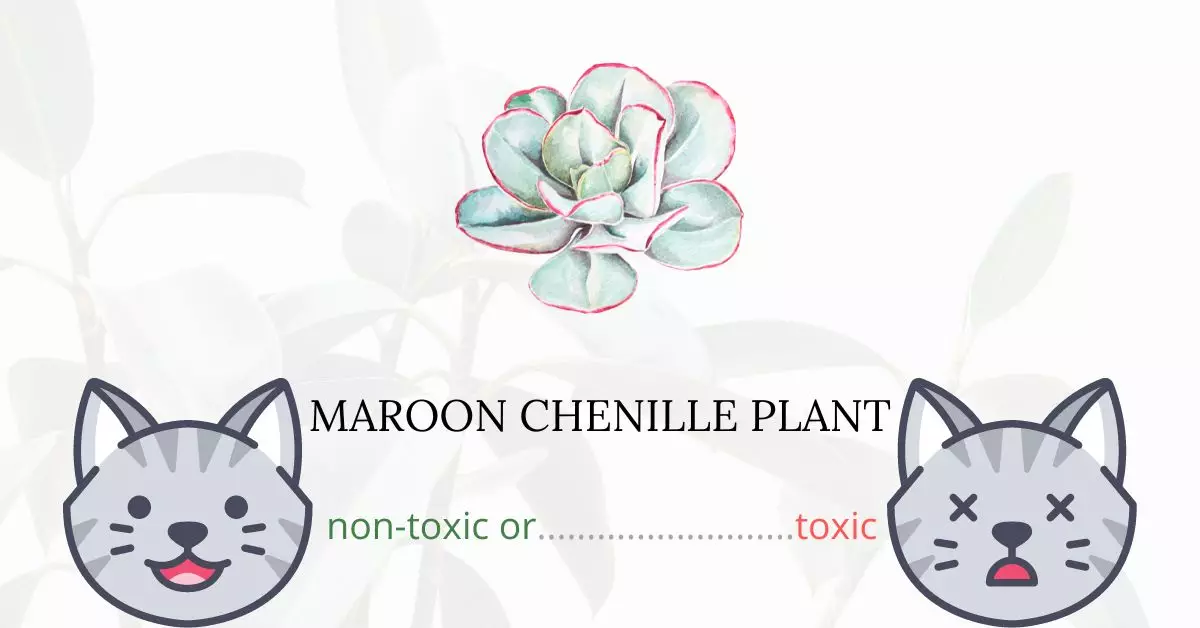No, the Maroon Chenille Plant is not toxic for cats. Cats can safely touch, lick, or even take a small bite of this plant without any adverse effects. However, it’s important to note that while the plant isn’t toxic, it is not recommended for cats to consume it.
This article was meticulously crafted in collaboration with a team of experienced DVMs (doctors of veterinary medicine). Through their invaluable insights, we provide accurate and up-to-date information regarding the potential risks associated with various plants, particularly the Maroon Chenille Plant, and its effects on cats. Additionally, to ensure comprehensive accuracy, our team consulted high-authority sources such as ASPCA and PetMD for every plant discussed.
Can Cats Eat Maroon Chenille Plant?
While Maroon Chenille Plant is safe and does not have toxic properties, it doesn’t mean that your cat can eat the plant. A tiny portion may not be harmful to them but large quantities may cause them indigestion. It may also lead to other gastrointestinal problems.
Cats suffer from indigestion when they eat plants because their bodies lack the enzymes that can digest plant materials in their stomach. While there are some plants that can be eaten by cats, it is important to consume them moderately.
If you have houseplants, be cautious in using chemicals on your plants. These plant care products are also a factor especially if your cats love to nibble on your plants. If they happen to eat a portion of the plant with toxic residues, they can be poisoned.
What is Maroon Chenille Plant?
Maroon Chenille Plant, scientifically called Echeveria derenbergii, is an evergreen perennial succulent that grows to 10 cm (4 in) in height. This plant has a thick basal rosette of pagoda-shaped, frosted, bristle-tipped, fleshy leaves. In the winter, it produces racemes of bell-shaped yellow blooms with “painted” crimson tips.
Maroon Chenille Plant is grown as a decorative plant for rock gardens and in pots. It quickly generates a colony of miniature offsets that may be removed from the parent plant, similar to other Echeverias.
It requires winter protection in cooler temperate countries because it cannot handle temperatures below 7 °C (19 °F); nevertheless, it may be planted outside in a protected position during the summer months. This plant has also received the Royal Horticultural Society’s Garden Merit Award.
Keeping Cats Away From Maroon Chenille Plant
You may position your succulents in locations where they will be more difficult to access, such as hanging planters or higher shelves. Building terrariums may also help to prevent your cats from accessing your plants.
Most cat parents also use natural deterrents to drive their felines away from their plants. Make sure to use natural plant care products only.
Ensure your cats are well-nourished and mentally stimulated indoors. This method will lessen the chance for them to nibble on plants due to boredom or starvation.
Still, educating your cats to avoid plants is the most effective strategy to keep them away from them. It may be tough and time-consuming at first, but it will benefit you, your kitties, and your plants in the long run.
Plants to Avoid For Your Cats
If you are a cat owner and unsure if the plants growing in your yard are harmful to your cats, check out this list of toxic plants for cats. You can also check our list of non-toxic plants for cats.





